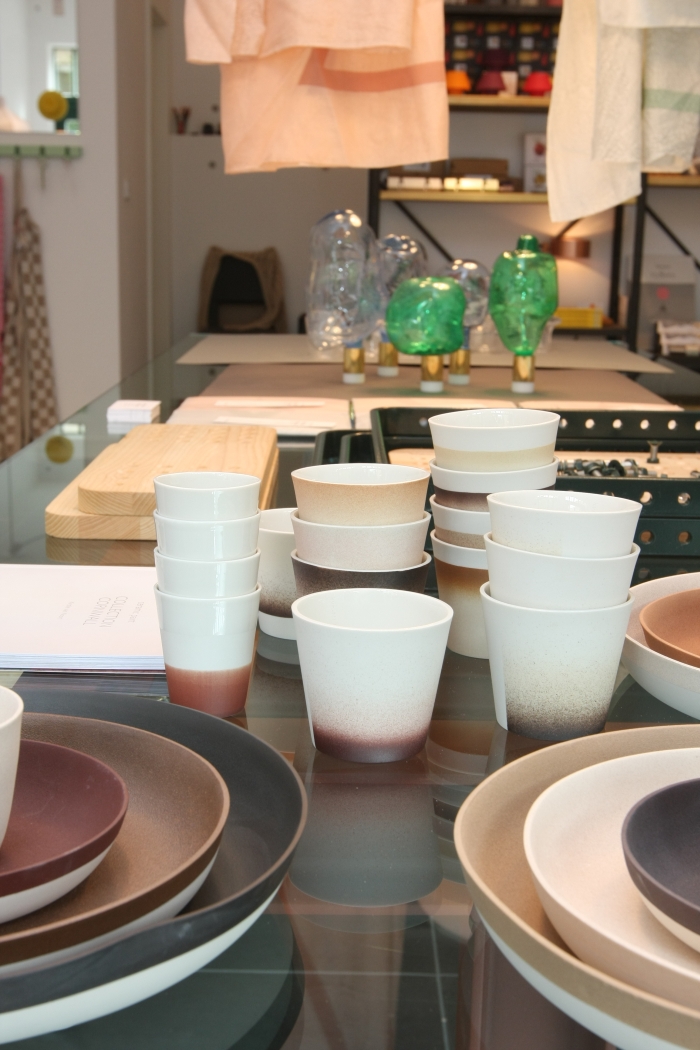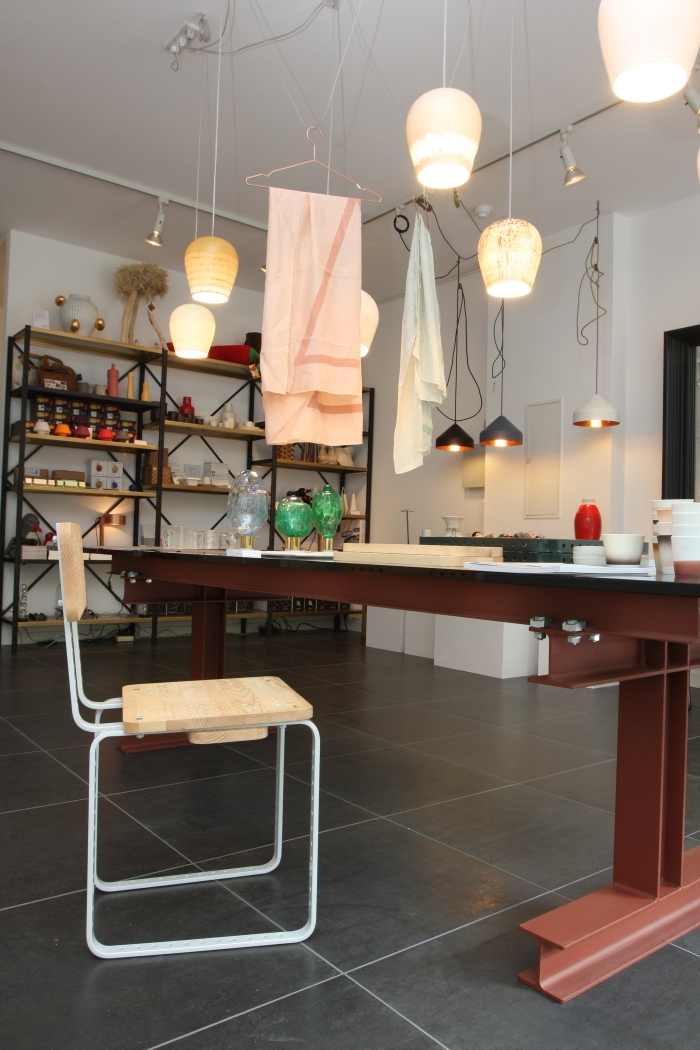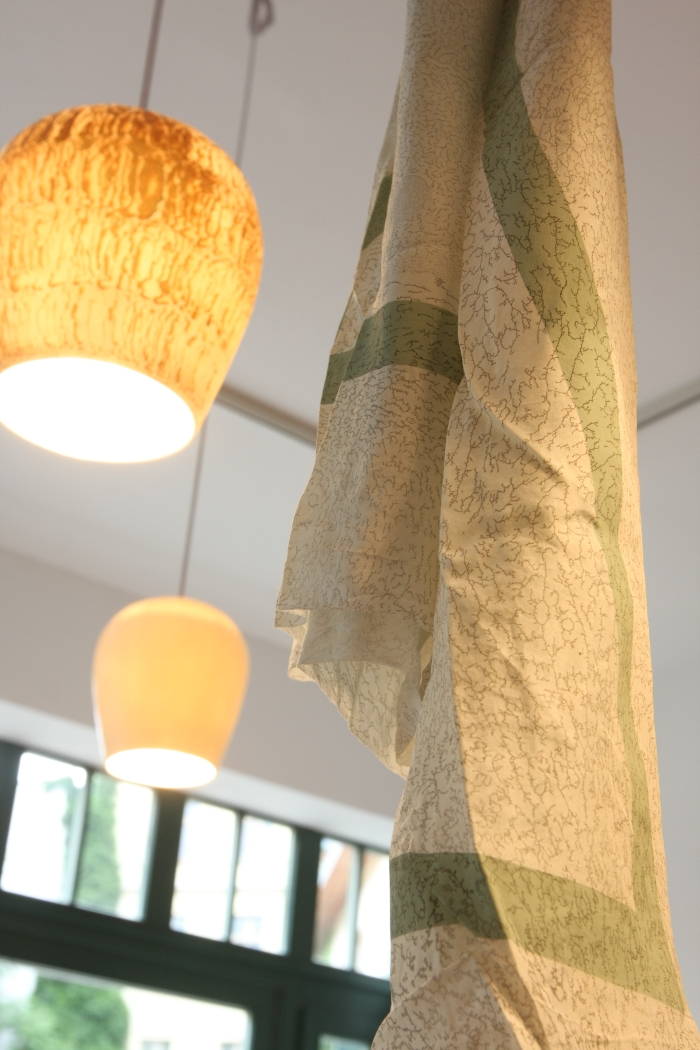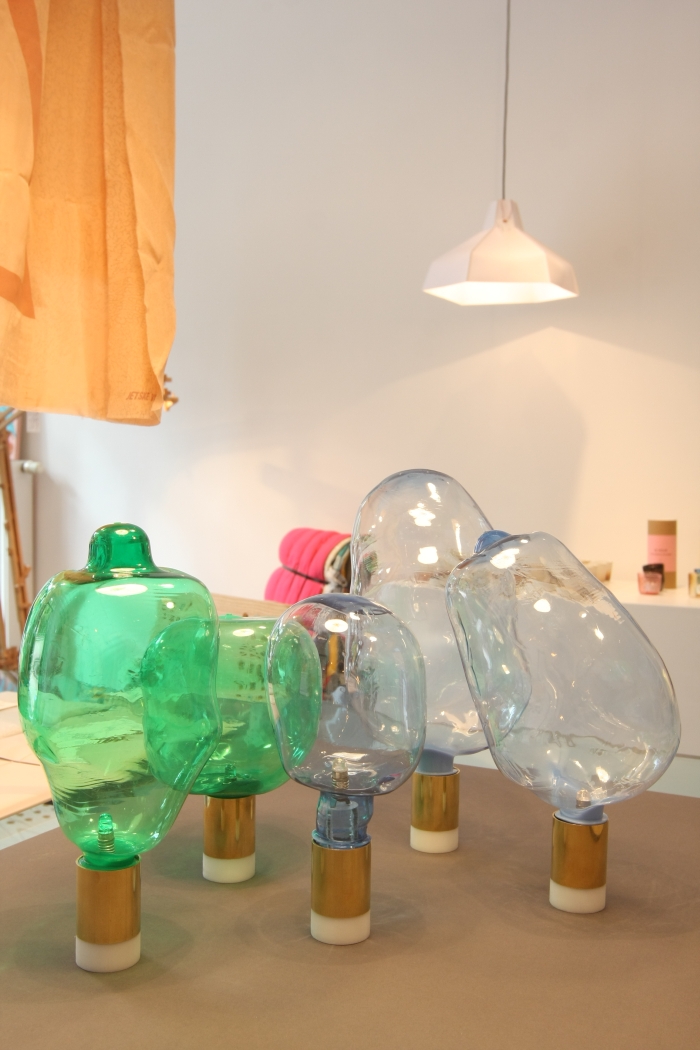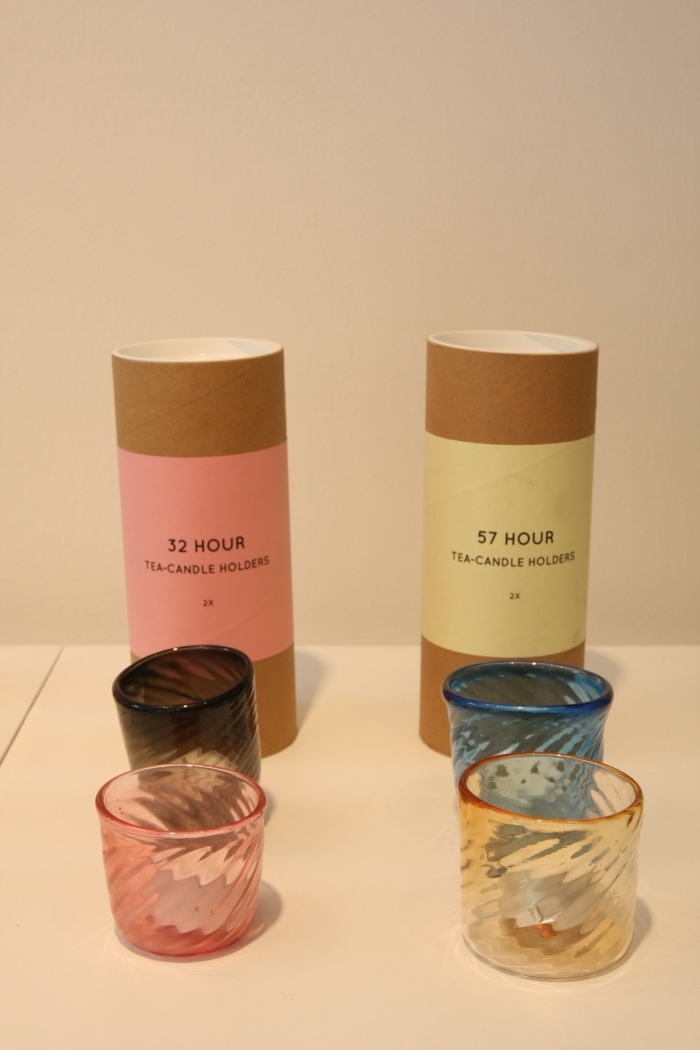As we believe we've said before, and assume we will repeat in the future, contemporary Dutch design is largely, though not exclusively, about the research, and the subsequent processes invariably developed. If it leads to a product, that's good. But it needn't.
That it however often does can be experienced in the exhibition Contemporary Creation Processes in Design on show at DAD Galerie Berlin.
Curated by Berlin based, Eindhoven graduate Ruben der Kinderen Contemporary Creation Processes in Design presents works by four Dutch design studio whereby regardless how appealing or otherwise one finds the end result, the focus is on the production process.
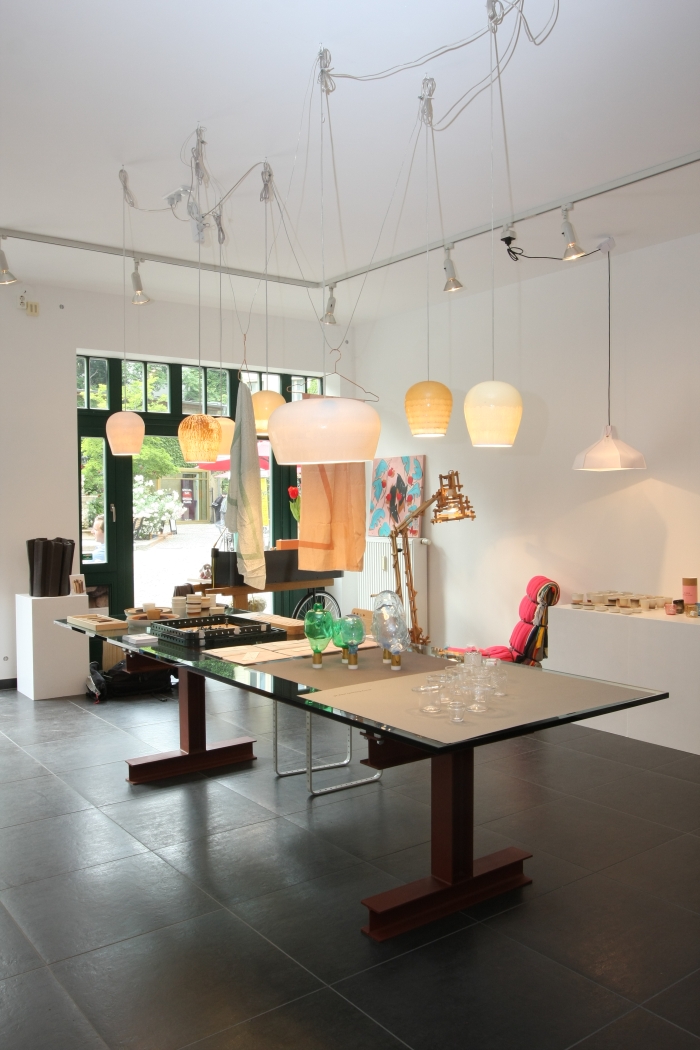
In 2010 Kirstie van Noort travelled to Cornwall to, in her own words, "research the extensive influence of the mining industry onto the landscape." For centuries ore and coal mining was the backbone of the Cornish economy and was an industry which in addition to supporting England's economic rise also gave the world the Cornish pasty. Kirstie van Noort's interest however was principally residues, rock and soil samples collected from sites associated with the Cornish porcelain, copper and tin industries. Back in Eindhoven Kirstie used these collected mineral containing materials as the basis for a series of unique ceramic paints which reflect the natural landscape and industrial heritage of the location from which the original material was collected. Applied to simple ceramic objects the result is collection of bowls and cups as unique as the few square metres of Cornwall from which the colour originates.
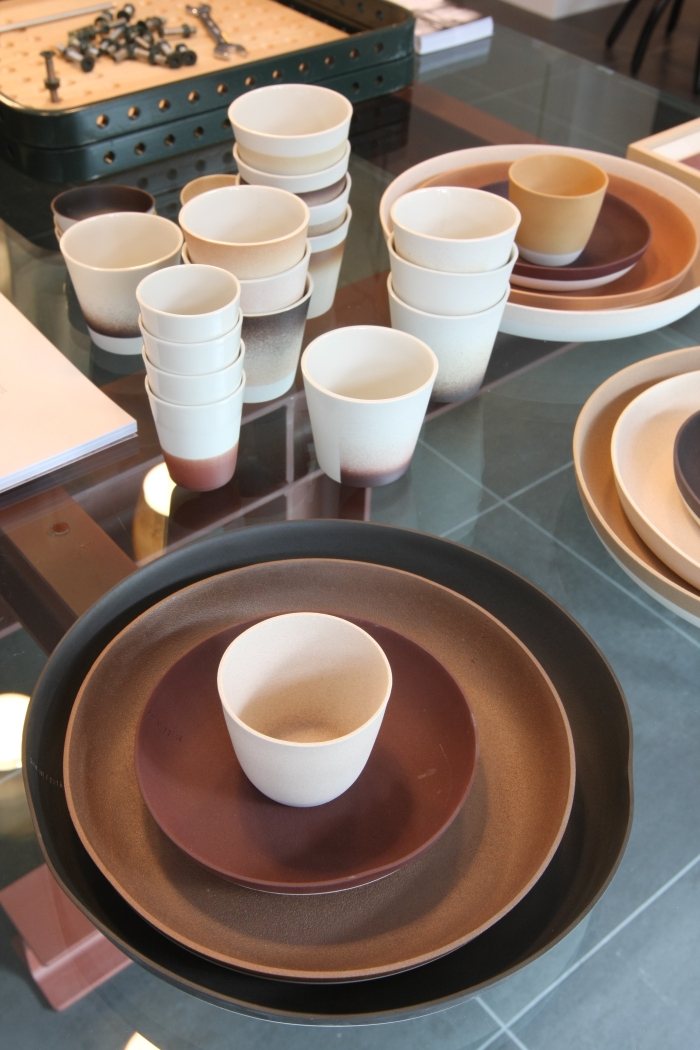
With their Open Objects project Lotte de Raadt & Dirk Osinga have created a chair which is supplied as seven individual elements that the user can assemble as they see fit. Although essentially a modular concept, it is much more an open design concept, and for all an open design processes concept. Open design process are, for us, the future of the furniture industry. Which no doesn't mean a future of DIY and crate furniture. Most us can't or simply don't want to get involved in DIY, have absolute no interest in making things; however, the processes, for example, CNC routing, laser cutting or 3D printing allow for fast, efficient, decentralised, customisable production, something which has not only environmental, economic and social advantages, but also offers the end user more choice. The challenge for manufacturers and designers is how to make that process as simple and as accessible as possible for customer so that we all benefit. The Open Objects chair isn't a particularly aesthetically charming product, however the idea is a very promising suggestion for a possible future solution.
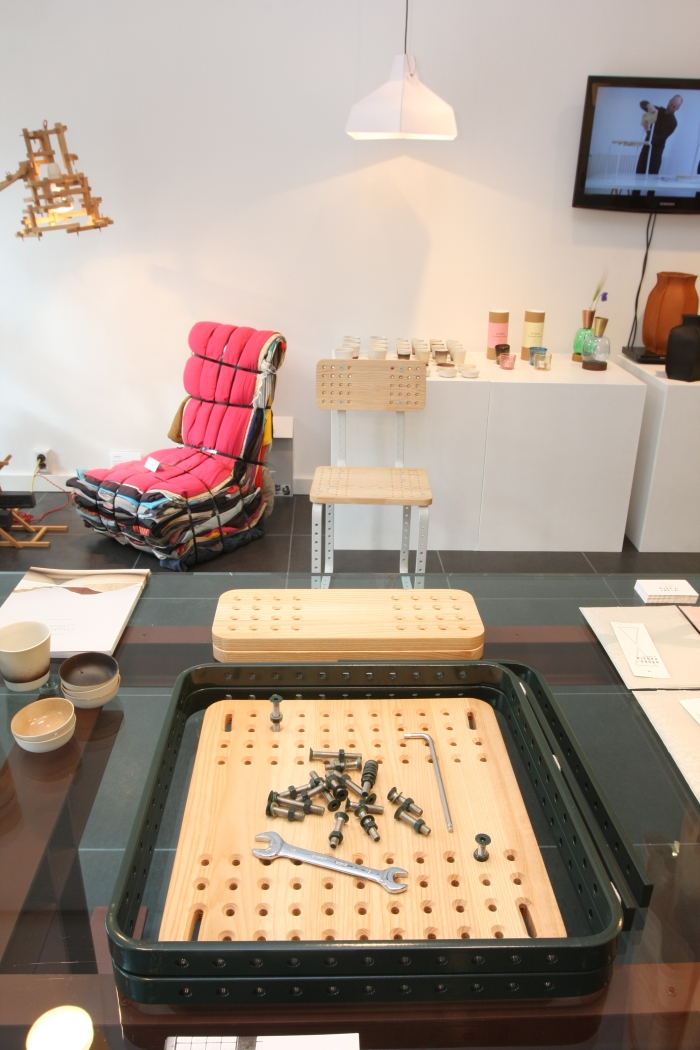
The last project we saw from Eindhoven based Jetske Visser was her Holon "spinning bubble", presented as part of the Dutch Invertuals Body Language exhibition in Milan. A confusingly futuristicly analogue creation Holon is one of those design research project where you kind of know that it will probably go somewhere very interesting. But you don't know where. Jetske's HYDRO-PHOBIA scarf project is much simpler, but no less captivating. Essentially Jetske has applied the centuries old process of marbled paper production to textiles. With marbled paper a coloured pattern is created from paints dispersed in water, a piece paper is laid on top and the pattern thus transferred. For the HYDRO-PHOBIA scarf an oil based pigment is dispersed in water and the resulting pattern transferred to a piece of silk. The result is the most delightfully filigree patterns reminiscent of frost on a poorly insulated window or the dessicated marks on conservatory walls when the ivy has faded. And naturally every piece is as unique as marbled paper. No the HYDRO-PHOBIA scarf doesn't advance society, but then it is textile design and its aim is to beautify society. Which it achieves.
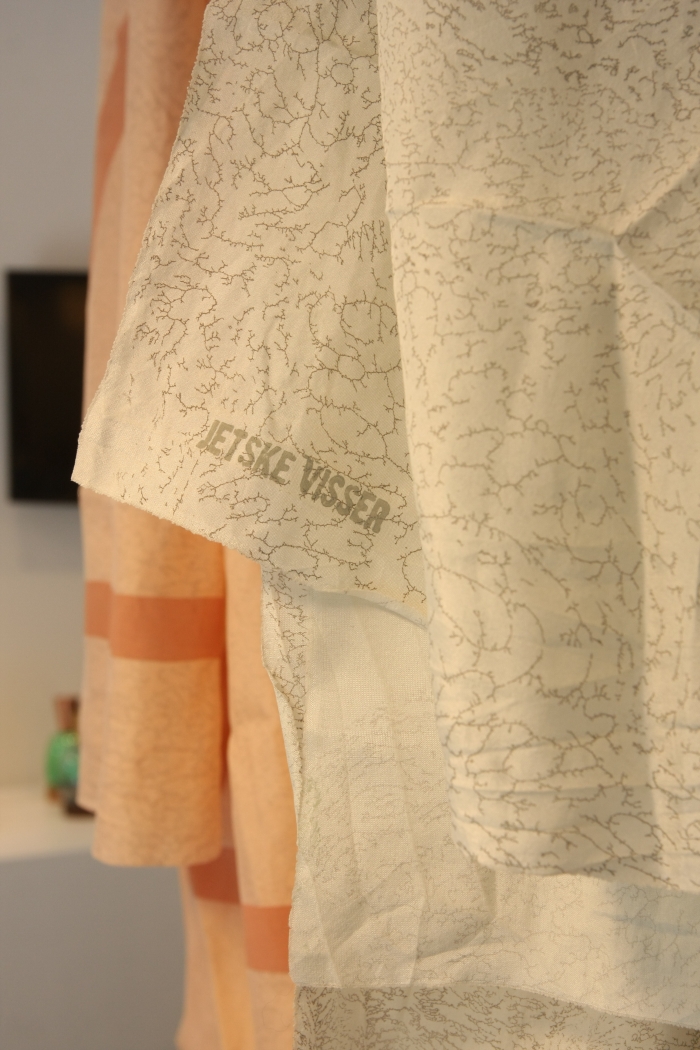
As a general rule industrialisation involves taking traditional manual, analogue production process and automating them. Not only does thereby a lot of the charm of the end product get lost, but also a lot of the understanding for how the process actually works. Something that is especially true when industrialisation creates new processes to meet changing demands and conditions. Who knows for example how PET bottles are made? Essentially it is an adaptation of glass blowing. Firstly an object the size an shape of a test tube is created. These are the "inflated" into the bottles. In order to both demonstrate this, and also claim the industrial process for the manual world Ruben der Kinderen has developed a process which makes use of the principles of PET bottle production, yet which can be used on your kitchen table; and which results in objects with all the grace of blown glass objects. Yes, we should be trying to reduce our reliance on PET bottles, but no one is suggesting that Ruben's process should become industrial and ultimately it is not about the end result, but understanding that by not understanding how modem industrial processes function we become ever further alienated form the world we inhabit. And for all looking for a permanent reminder of such, Ruben has created a collection of vases which combine PET with copper, and is developing a collection of LED PET lamps.
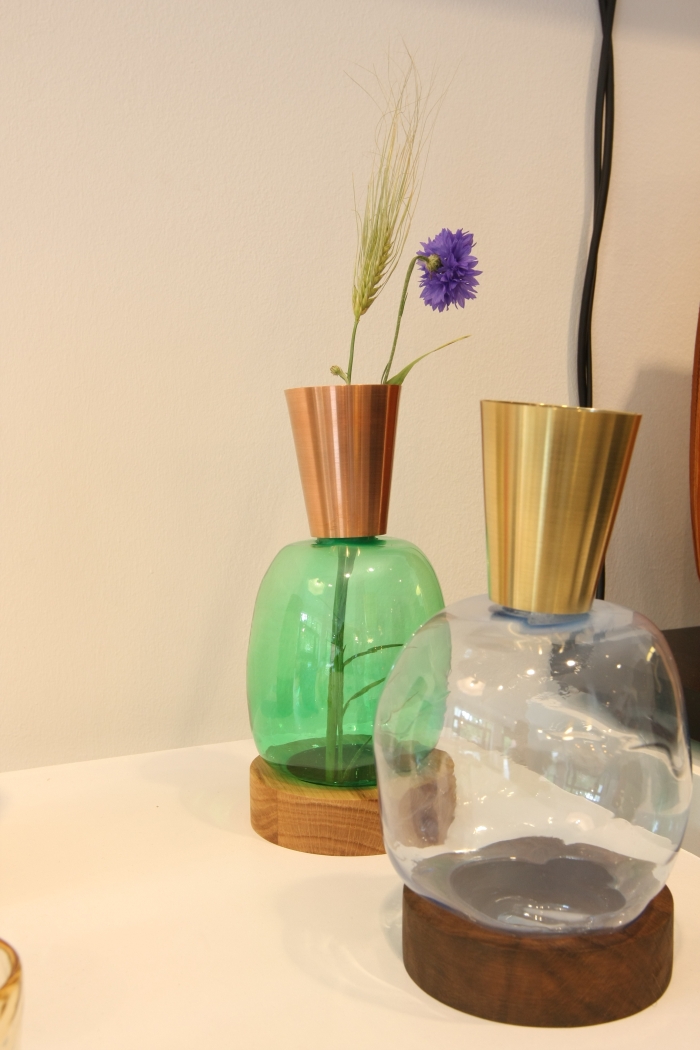
While Ruben der Kinderen's PET bottle objects resemble glass his 57 Hour Learning Curve project is glass. Wanting to learn the black arts of glass blowing Ruben der Kinderen began a course with Berlin Glas e.V. Being an Design Academy Eindhoven graduate Ruben documented the process in that he saved all the pieces he created, thus allowing him to compile a sort of 3D timeline of his "progression" A timeline which can be viewed at DAD Galerie . We use the inverted commas for "progression" because while we are sure he is technically improving with every hour, as the objects on display make very clear, concepts such as to what is the "best" glass aren't as clearly defined as they are often presented. Is the glass created after 57 hours really "better" than the one created after 18? Or 35? That depends on your perspective, your idea of the "perfect" glass, the function that it should fulfil and how well the object in hand ultimately fulfils that intended function. And as 57 Hour Learning Curve beautifully demonstrates there isn't a definitive answer rather a range of possibilities. A realisation which goes on to pose a whole range of further questions about..... well everything.
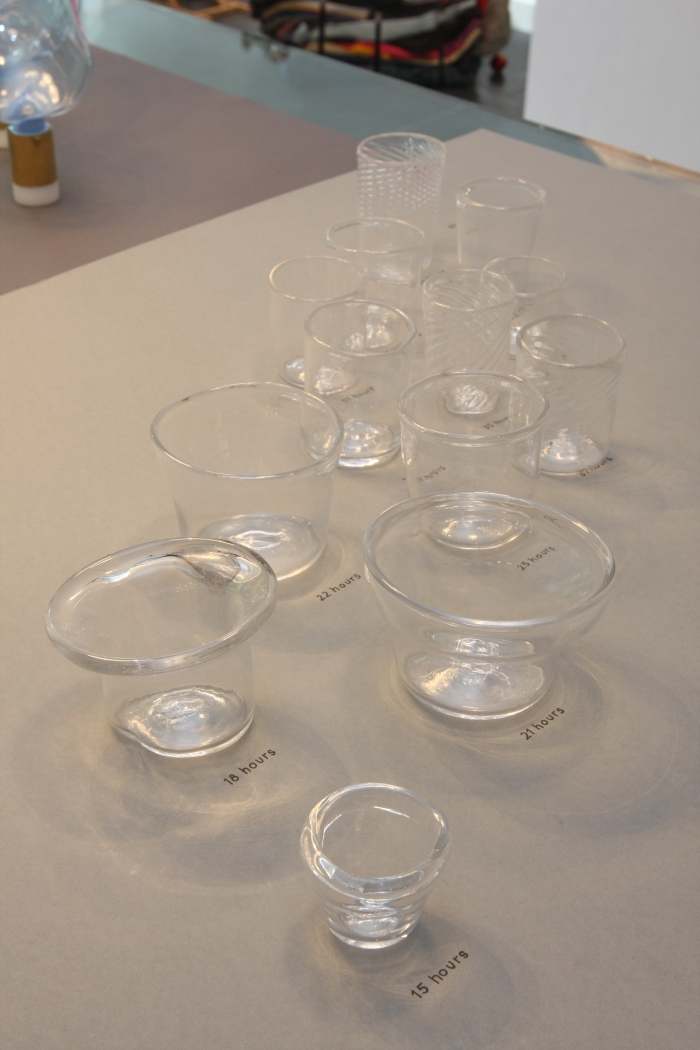
Contemporary Creation Processes in Design is not an exhibition in the museal sense, rather in the in-store display sense. There are therefore no swathes of text explaining the background to the projects, but there are experienced staff on hand to explain the projects. And more importantly the processes that led to the physical result you see.
Contemporary Creation Processes in Design runs at DAD Galerie Berlin, Oranienburger Str. 32 (Heckmann Höfen), 10117 Berlin until Sunday June 14th. So during DMY 2015
Full details can be found at http://dad-berlin.de

